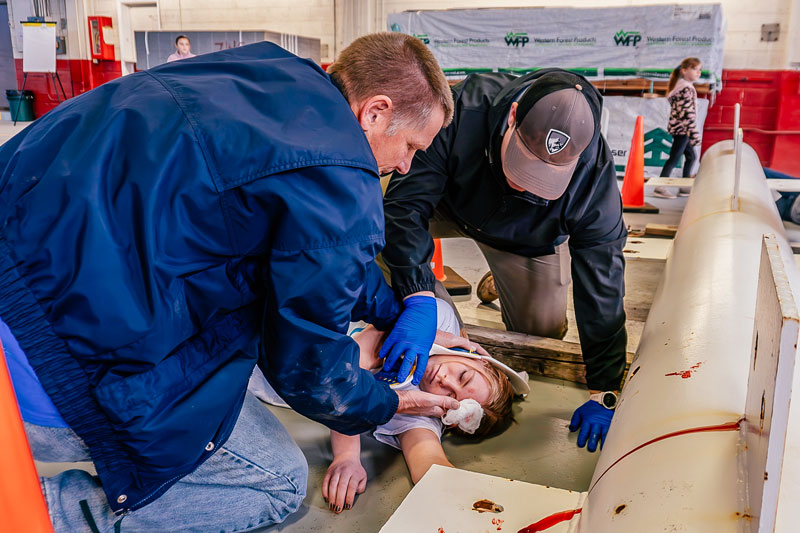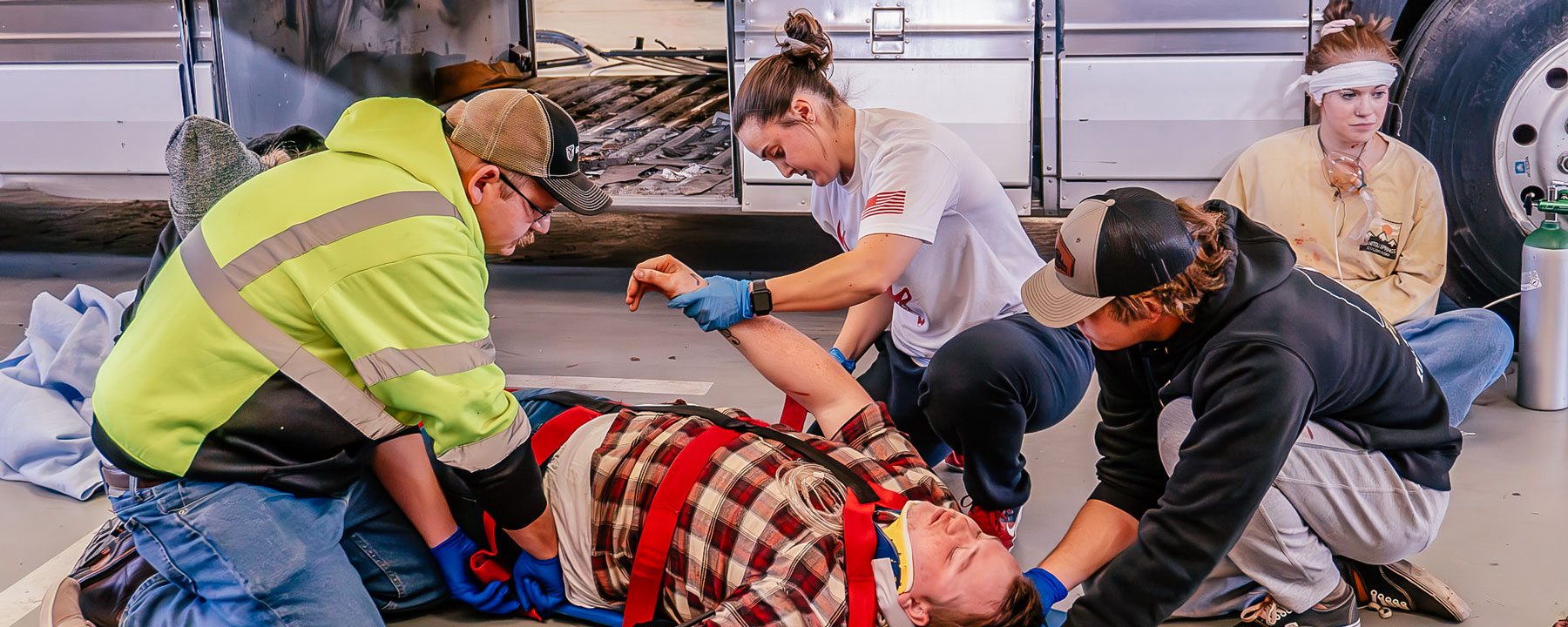Idaho State University continues to enhance its simulation capabilities, benefiting students across all campus locations. Similar to pilots who use simulated flights in learning to fly a plane, simulation opportunities at ISU are valuable training tools for students in health professions programs and many other fields. Students from a variety of disciplines experience specialized training to help better prepare them to work in their field.
Some of the traditional simulation tools students in health sciences programs utilize include simulation manikins. ISU recently constructed a new Health Occupations Simulation Laboratory for students in the College of Technology. This year, six new life-like manikins were added, offering a realistic training environment that mirrors real-world clinical scenarios.
The Echo Healthcare Lifecast Manikins are particularly beneficial for a range of programs in the College of Technology, since a key feature of the Health Occupations Simulation Lab is its ability to provide a platform where some students can complete a portion of their clinical hour requirements.
“Our students are not just learning, they’re experiencing the complexities of patient care in a way that textbooks alone cannot provide,” said Jennie Brumfield, co-chair of the Health Occupations Department.
A new portable Anatomage table allows students to study body systems, providing both full-body views and slice views similar to MRI scans. This capability for detailed exploration and the ability to transport the smaller, portable table to multiple locations helps students learn by simulating dynamic physiological responses that significantly enrich the educational experience.
“Working with the Anatomage tables has really made my studies come alive,” says Mattie Wilson, a student in the physical therapist assistant program. “We can view real human anatomy in 3D and all the things we are learning about make sense.”

Recognizing the need to grow the skilled health care workforce in Idaho, the College of Health also plans to construct a new, state of the art simulation center in Pocatello.
Grant funding from the Idaho Workforce Development Council and matching funds from Portneuf Health Trust will help purchase the technology, which includes cutting-edge tools such as virtual reality, high-fidelity manikins programmed for various clinical settings, and even 3D holograms.
“We have 4,000 students in the Kasiska Division of Health Sciences,” said College of Health interim dean, Gabe Bargen, “and we don’t see a limit for this model. It allows students to learn safely in a laboratory setting, while also getting real-life clinical experience.”
Additional simulations include:
Virtual Reality: This allows students to look inside simulators to see real processes like the birth of a baby or to play a health care game with avatars, experiencing instant readings for heart rate, blood pressure and bodily reactions. Artificial intelligence is used to help these animated patients talk.
Human Patient Simulation: Ultra-high-fidelity tools that look like people can be used to practice CPR, listen to lung and other vital sounds, imitate seizures and much more.
Holograms: Enhanced display equipment will eventually allow doctors and patients to project a 3D physical representation of themselves into distant sites— an important tool so Idaho’s students, and future patients, can have human experiences even when remote conditions won’t allow them to see a specialist in person.
Bedside manner doesn’t just appear, it comes with practice. The Department of Theatre and Dance at ISU also plays a pivotal role in simulations by facilitating actors to portray roles in various health care settings. Students in health professions programs practice and respond to real-life scenarios portrayed by student actors, such as patients experiencing symptoms, distressed family members, active shooter, disaster, search and rescue, counseling services and more. Not typically included in the standard theatre major curriculum, this training and immediate feedback benefits all students involved.
Theatre designers can contribute in a variety of ways as well, including moulage makeup for triage, location scouting and design that allows for training that is authentic and repeatable, prop creation, and making models in labs.
ISU brings together students and faculty from across campus to collaborate and push the boundaries of what can be achieved through simulation, boosting career readiness by offering comprehensive training experiences.


